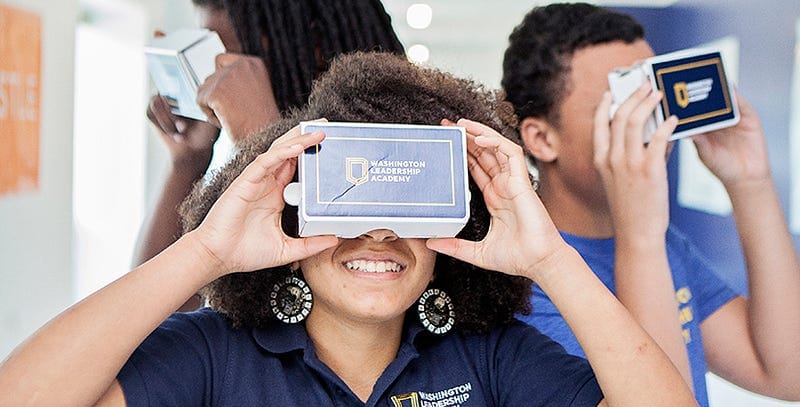Virtual / Augmented Reality in Schools: How do we align tools with instruction?
As schools look to prepare their students for an increasingly technological world, the use of virtual/augmented reality tools has become a…

As schools look to prepare their students for an increasingly technological world, the use of virtual/augmented reality tools has become a very trendy method to fuel student engagement. But does VR/AR hold up from a pedagogical standpoint? The answer, simply, is “it depends”. Virtual reality in the classroom has the potential to not only ignite student interest, but also provide students with exposure to experiences that they would not otherwise encounter in their day-to-day lives. Whether it’s going on a class trip to Paris, peering directly into a human brain, or just being able to virtually draw your thoughts on the walls of the room around you, virtual/augmented reality offers a portal into a new world of experiential learning. However, the VR/AR sector is still in an early-growth stage and the quality of applications and tools available in the marketplace is varied.
As the available VR/AR applications grow and improve, Washington Leadership Academy (WLA) aims to be at the cutting-edge of this space in education. As such, we have started compiling a database of virtual and augmented reality tools that can be used immediately in the classroom (as long as you have a class set of smartphones and headsets, like the Google Cardboard). Each tool has been mapped to the corresponding Common Core State Standards which they address. Virtual/augmented reality solutions continue to re-define how we educate our students. Check it out by clicking on the link above and keep an eye on WLA to see how we keep up!
If you have suggestions for additional tools, platforms, or applications that should be included in this database, feel free to shoot an e-mail to info@wlapcs.org with “VR/AR Database” in the subject line.